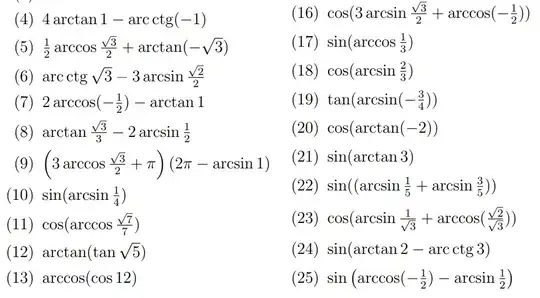Sorry for asking such question.
I have a very basic understanding of $\arcsin, \arccos, \arctan$ functions. I do know how their graph looks like and not much more beyond that.
Which specific keywords should I google to learn how to solve the following tasks? I think those aren't equations (googling 'cyclometric equations' was a dead end). Perhaps you would like to share with some link to a beginner-friendly learning source?
Thank you.
